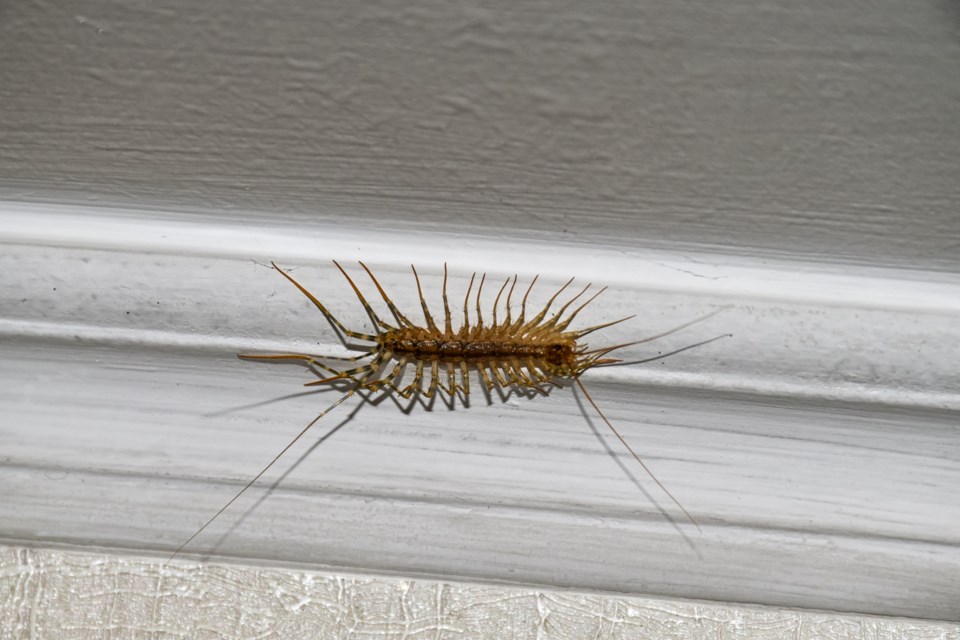Whether it's insects or rodents, any infestation presents serious challenges in your home.
Some pests, such as bed bugs or roaches, can appear year-round. However, other unwelcome intruders enter your house during one of the four seasons throughout the year.
You can do several things to help decrease the risk of seeing specific pest problems by taking preventative action to limit their impact before the pests can take root. Firstly, understanding what pests might appear during a particular season can help protect you from being overwhelmed.
Fall pests
The fall months see various bugs and mice trying to enter the house.
Boxelder Bugs look to bed during fall to hibernate during winter, usually in roofs and loft spaces. Their black color also contains distinctive reddish lines, with nymphs colored bright red. Their fecal waste can cause red staining throughout the house and can cause damage if left untreated. They can occasionally bite, irritating the skin.
Stink bugs live up to their name when threatened by releasing a pungent odor. They are widely found across North America, continue to spread, and tend to enter the home through ground entry points.
Meanwhile, mice are dangerous as they can spread diseases like Hantavirus and Salmonella, while protein found in mouse urine can trigger asthma attacks.
To take preventative protective measures against fall-time infestations, remove air conditioning units from windows and ensure garage doors are in good repair, as this is a regular entry point for rodents into the home. Hire a pest control professional in late summer to review and make any exterior treatments to repel insects before the winter.
Winter pests
Once the cold weather sets in, the most likely pests to see are house centipedes and silverfish.
The house centipede tends to be found in damp areas like bathrooms, cellars, attics, and closets. They contain between 15 to 90 pairs of legs and move extremely quickly. Females can produce as many as 35 eggs daily, making it essential to act quickly if you find these creepy crawlies in your house.
Silverfish can live for up to three years, often found in wood or debris piles outside the home. They are silver-gray with a torpedo-shaped body, hence their name.
To try and limit the risk of infestations from these insects, get rid of any wood piles outside the house before winter sets in. Likewise, if you use cardboard boxes in your garage or attic for storage, it is worth transferring things into plastic storage boxes before the winter, as cardboard is an excellent shelter point for pests. If you have a basement, use a dehumidifier to remove as much moisture as possible and go around the house to fill in any cracks and crevices that could be entry points for insects.
Spring pests
As winter thaws and the warmer weather sets in, the number of potential pests increases significantly. Springtime sees carpenter ants, ticks, and termites come into their own.
Carpenter ants are highly active in the spring and summer, and their nests can cause substantial structural damage, particularly in timber-framed houses. They like to excavate wood to build their nests and target moist or damaged wood.
Meanwhile, ticks can be dangerous to humans. Found in grassy and wooded areas, pets can transfer these nasty insects into the home as they like to cling to pet skin. They can transmit Lyme disease to humans.
Perhaps the worst and most damaging of infestations come from termites, which eat 24 hours a day, seven days a week. It’s estimated that they cause billions of dollars worth of damage to properties annually. They tend to swarm during spring, and once the weather begins to dry and get warmer, treatment of an infestation should always be left to professional pest controllers.
Preparatory treatment for pests in spring includes clearing any debris and fallen branches from the backyard and garden and moving any log piles away from the house to prevent the likelihood of termites and ants infesting your home. Any sweet and sugary food in the home should be kept in airtight containers to avoid attracting unwanted visitors to the kitchen.
Summer pests
The summer attracts pests and insects that are a nuisance and can harm humans.
Stinging insects, such as bees, wasps, and hornets, are common summer pests, with yellow jackets potentially proving extremely dangerous as they remain secreted but will attack in huge numbers when disturbed.
Although bed bugs remain active throughout the year, human travel throughout the summer to different parts of the country and world can increase their activity and spread. They are nocturnal and often elusive, frequently entering the home on second-hand furniture, mattresses, and boxes.
The most dangerous summer pests are mosquitoes, which can spread potentially deadly diseases such as West Nile Virus and Dengue Fever. Mosquitoes are regularly found in areas with standing water but can be repelled when outside by an electric fan.
If you see a stinging insect, do not run away or swat them. This will make them more angry and likely to attack. Instead, remain calm and slowly move away from them. Use mosquito repellent with an EPA-registered active ingredient, and if you’re eating outdoors during the summer, keep all food and drink covered until it's served to avoid attracting insects.
You will never be able to fully protect your home or surroundings from pests fully. Still, following these simple tips throughout the year can limit the likelihood of a minor nuisance becoming a full-blown infestation.
Speak to your local professional pest control experts, such as PestLine in Barrie, for further tips and information.
